My Dear Alice

Chapter 7: 1895 & 1896 – Bicycling for Ladies & Street Types of New York
(collaboration / publication / attribution)
Image attributions: (HRT) Historic Richmond Town archive; (AAH) Alice Austen House Museum collection; (NYPL) New York Public Library.
1889 Violet Ward and unknown friend at Clear Comfort
Austen spent time traveling and collaborating with Violet Ward in 1895 & 1896. (AAH)
1895 bowling party
Austen’s friend Julia Marsh Lord had a bowling alley in her home. (HRT)
1896 Julia Martin, with Austen & nephew at Clear Comfort
Martin visited from Santa Barbara, CA, with her nephew Kingsley. (HRT)
1894 envelope from Julia Martin in Santa Barbara, California
Envelope from Santa Barbara, CA, with torn corner stamp removal. AAH)
1894 letter from Julia Martin in Santa Barbara, California
Letter from Julia Martin with torn center from envelope stamp removal. (AAH)
1894 The Palms boarding house item
Item from Julia Martin’s Santa Barbara boarding house. (AAH)
1895 Violet and Carrie Ward
On the set for the Bicycling for Ladies book photos. (HRT)
1896 Bicycling for Ladies
Book cover of the original edition – re-issued in 2021.
1895 Daisy Elliott posing for Bicycling for Ladies
The bicycle is propped as Elliott holds her pose on the wrong way to turn. (HRT)
1896 page from Bicycling for Ladies
One of very few images that was not heavily retouched.
1896 the Bicycle Club Tea event
Staten Island Bicycle Club’s clubhouse on the day of the Ride & Tea.
1896 Bicycle Club Ride & Tea
A photo in one of Austen’s photo albums. (HRT)
1895 Bicycle Tea event envelope
Glass plate envelope with Austen’s meticulous notations. (AAH)
1896 Bicycling for Ladies page
Drawn over illustration of Daisy Elliott.
c 1895 portrait of Alice Austen
Austen poses with her new bicycle.
1895 letter on Staten Island Bicycle Club stationary
Letter from Daisy Elliott. (AAH)
1895 Daisy Elliott poses for Bicycling for Ladies
Original caption, “Wheeling From the Peg — Showing Distribution of Weight” (HRT)
April 1895 New York street market
An early Austen street photograph. (HRT)
1896 Street Types of New York card insert
The complete list of Street Types from the portfolio album. (AAH)
1896 Street Type photogravure of Organ Grinder & Wife
A photogravure print from the portfolio. (AAH)
1896 Organ Grinder and Wife
Photograph of a Street Type image donated in 1950 to the New York Public Library (see notes) (NYPL)
1896 Newspaper vendor
A print in the collection of the New York Public Library (see notes) (NYPL)
1896 Hansom Cab at Union Square
An image also included in the Street Types portfolio. (see notes) (NYPL)
1896 Mounted Messenger Boy
At 30th Street. From the Street Types portfolio – a photogravure print. (AAH)
1896 Newspaper vendors
Photograph in the collection of the New York Public Library (NYPL)
1896 Police Officer right profile
Austen’s only side view portraits seem to be of large-bellied policemen. (NYPL)
1896 Police Officer left profile
Austen’s only side view portraits seem to be of large-bellied policemen. (NYPL)
1896 Rag Carts
Photograph in the collection of the New York Public Library (see notes) (NYPL)
1896 copyright submissions
Alice Austen copyrighted photographs of the disinfecting boat and her New York street portraits.
1896 New York Quarantine Station
A room in the Quarantine Station. (HRT)
1896 mattress and disinfecting chamber
One of many photographs Austen shot of the NY Quarantine Station. (HRT)
January 1897 Popular Science Monthly
Austen collaborated with Violet Ward on two articles about New York’s quarantine facilities.
1895 disinfecting boat negatives envelops
Austen made these photos for articles that Violet Ward wrote (see notes) (AAH)
1896 Harper’s Weekly article with Austen’s photographs
Violet Ward wrote the article to accompany Alice Austen’s photos.
Opening music …
[Violet Ward]
Chapter 10: Difficulties to Overcome.
The first thing to do after learning the theory of starting and stopping the machine is to make it go. No matter what happens, keep it going, the faster the better, until a taste is acquired for the pastime; until the going forward forever idea seems to have taken possession of you.
Then you want to try it again, but mounting seems more difficult than ever. The machine will not do anything it ought to do; it bucks and kicks and stops and spills and slips, and will not stand still, or even move on. You know how to mount, or think you know; but that knowledge does not seem to aid materially in overcoming the tendencies of the machine.
Now be sure that you do know what to do. The first thing to know is that the weight placed on the pedal starts the machine; that the foot on the ground will hold the machine, and keep it from starting; that the machine when in motion will move without falling, and when at rest will not stand still unless held up.
Theme Music …
[Narrator]
That was Violet Ward and an excerpt from her book Bicycling for Ladies.
I’m Pamela Bannos in collaboration with the Alice Austen House Museum, and this is My Dear Alice.
Chapter 7:
By the end of 1894, Alice and her friends were approaching 30, and their individual trajectories were taking form. A few of them settled into married lives, immediately having babies. Childhood friends Julia Marsh and Lou Alexander, already born into comfortable families, married wealthy businessmen. Julia stayed on Staten Island and became popular among her friends for parties at her home’s bowling alley. Lou moved to Boston where Alice would visit and photograph her opulent home and young family. Two other friends, Effie Emmons and Julia Martin moved further away. Effie married Lou Alexander’s brother Junius, and they moved to Washington State, where he was one of the founders of a wilderness town called Sedro, 75 miles north of Seattle, where Effie mostly stayed. Each of these married women had a two-year-old in 1894.
Julia Martin also left Staten Island but for different reasons. I’ve mentioned that Julia wrote the most letters remaining in the archive – there are 87 of them. She’s been writing all along as we’ve followed Alice through the 1880s until this point. Her letters, sent from Albany, Schenectady, and Bennington, Vermont, show her as displaced, particularly after her father lost their Staten Island home, which itself was a source of gossip in Alice’s circle:
[Alice Cornell Austen]
Miss Edwards told your Auntie that Mr. Martin had not bought the house from Mrs. Easton but had leased it for ten years, which is now expiring, and Mrs. E has come over to look after it. She has been seen on the Island with her husband the count. If this is so, the Martins cannot receive the rent, for the place is Mrs. Easton’s. What a snarl it is.
[Narrator]
In another letter, Alice’s mother followed up:
[Alice Cornell Austen]
I believe your Auntie wrote that Howard Martin and Amy were staying with I.K. I feel sorry for them, turned out of their pretty house, hard luck all round. Trudie must be glad she threw Howard over.
[Narrator]
That Trude Eccleston really got around – this is the first reference that she and Julia’s brother, Howard, had once been an item.
Julia Martin left Staten Island for Albany, where she ended up working for the elderly Mrs. Cooper.
Effie Emmons Alexander wrote:
[Effie Emmons Alexander]
Poor Julia Martin I feel very sorry for her, I hope she will be happy in this place she’s got; she never was happy at home so, perhaps she will be now.
[Narrator]
Julia had written Alice all the details, which I’ve largely skipped over until now because except for their summer together in Bennington, Vermont, it mostly veered away from Alice’s story. But this intertwined circle of friends also shows the culture and times in a way that is not particularly accessible through history books. I, for one, was surprised at all the moving and traveling among this tight group – especially in juxtaposition with the Austen family who stayed at Clear Comfort for three generations.
At the end of 1891, Julia wrote Alice:
[Julia Martin]
I came to Mrs Cooper’s on Monday & she is as sweet and kind as ever, and I realize how thankful I should be to have such a home.
The days fly by. Every morning we got out shopping and do not get in till dinner time, after which I read aloud or help Mrs Cooper with anything, then I go out to make calls or to teas etc., so that my mornings & evenings are mostly engaged, but my afternoons are free.
At first when I thought this is my home, no shipping off to Alice Austen’s or to other parts of the earth surface, I felt a little shaky, but I am alright now, and one certainly must be away from one’s friends to appreciate them.
[Narrator]
Five months later, in April, she wrote:
[Julia Martin]
On the whole, I have had a pleasant Winter, but I think I am in the habit of staying here a month & there a month, that I feel one place for six months – is it not rather a long stretch?
How I should like to see you, Alice. There is so much I should have to say.
[Narrator]
Then in May:
[Julia Martin]
Dear Alice,
It is baking hot and I have put on most of my summer underwear, and yet feels 100 in the shade. As the summer comes on, I long to have a glimpse of Staten Island and all my friends, but I fear I am destined for Bennington till next November, with the exception of a week or so in Albany.
[Narrator]
And then, a few weeks later:
[Julia Martin]
If I ever left Mrs. Cooper, it should be on the plea of beginning something which should be my life work, which would be true. I feel that if I live with Mrs. C for five years and then she dies, and I am 30 years old, and each year now will be harder for me to begin any work.
[Narrator]
And then a couple of weeks after that:
[Julia Martin]
Yesterday, Mrs. Snively and I had such a nice talk. She told me that her mother would feel awfully to have me leave her, etc. etc., and she says that next winter she will see that I have some part of everyday for my own, so that I feel much encouraged, and have made up my mind, if possible, to live with Mrs. Cooper as long as she lives.
[Narrator]
Then, October:
[Julia Martin]
Well, Alice, you will not see me this autumn, after all, for Mrs. Cooper and I are going to stay here until January, and Mrs. Snively all winter.
What do you think of that? Am I sorry? I do not know. On the whole, I do not think I am, although I suppose there will be many long dreary days, but it will make the winter shorter in all this, and next month is beautiful here.
[Narrator]
Julia Martin is the only correspondent who ponders life in her letters – it seems to be because her trajectory is uncertain. In early 1894, two years after her comment about staying on with Mrs. Cooper, the elderly woman and her daughter Mrs. Snively wintered in Santa Barbara, California. And when Julia sent Alice condolences for her grandfather in May, she announced her departure to join them.
[Julia Martin]
Life to me is one great mystery of uncertainty. One minute we are here, the next away.
I feel this because my life is so varied. What do you think, now I expect to go to Santa Barbara probably next week, for the summer. I found a telegram awaiting my arrival from Troy on Friday morning asking me if I would come “expenses paid,” “terms as before” & this was the first I knew that they were not coming home.
So, I thought I should go, & off I am. Am I glad? Yes, very. The trip will be delightful & it is always education to go to new places & of course I am glad to see Mrs. Snively – but Alice, I feel it is a very long way to go all alone away from all my friends & the few who are very dear to me & I somehow feel it will be longer than the summer.
I feel it is the best thing to do for lots & lots of reasons & I am wild with delight, and blue as blue can be – if you can understand that mixture of feeling, and so death & change come so quickly we never know where we are.
[Narrator]
Two months later, her life changed again – she wrote from Santa Barbara:
[Julia Martin]
You really would not know me; I can hold my own so well and have to do it all the time too. Now that I am here, I want to stay, if possible, through next summer till the following October, but do not know if I can work it.
If you can keep something, I will tell you a scheme of mine – I have written for Amy & the children to come out here & help me keep a boarding house & am of course anxiously awaiting an answer. It is not as wild an idea as you may think & I believe there is money in it. Would it not be odd if I should end up by living at this end of the earth?
I feel as if but for you, I never care to see Staten Island again.
[Narrator]
A couple of weeks later, the boarding house idea took hold:
[Julia Martin]
Well Alice, I do believe I am to make this far distant place my home for a few years at least. In my last letter to you I spoke of opening a boarding house & have now about decided to do it. Amy and the children are coming out to me the end of October & together we will either make our fortune or go bankrupt.
[Narrator]
During the first week of August, Julia explained some of why she decided to embark on this venture.
[Julia Martin]
Well, now for the questions. First, how did I get the idea.
I do not know if I wrote you that Walton came to Albany the day before I left & we talked all day & most of the night & I discovered that what I feared was only too true. Back to old tricks, no business & no money & naturally no prospect of any.
Walton seemed to think things were hopeless and when he said goodbye, told me to stay out here if possible. On the train, the idea came to me that there must be lots of winter visitors coming & going, & so I determined to see what I could do.
[Narrator]
Julia’s brother Walton was a physician living in Manhattan, he was soon to begin a decades-long illustrative surgical practice – and he would become Teddy Roosevelt’s personal physician in Roosevelt’s final years. His medical practice may be important for later history here. At this point in the story, Julia called for sister-in-law Amy to come out with her young son and 2-yr-old daughter – she was having trouble in her marriage with Julia’s other brother, Howard. And she described the house and grounds, which provide a striking glimpse into this California town in 1894:
[Julia Martin]
There are pleasant grounds around the house – two acres, perhaps – with palm trees, fruit, and rose bushes; and I hope to be able to get in a single tennis court on the side of the house.
A piazza runs halfway around, from which you get glimpses of the ocean as you do from many of the bedrooms. The horse cars run in front of the house every twenty minutes, down through the shopping part of the town & on to the beach, to the bathhouses.
So, you see, we have everything in locality that could be desired …
[Narrator]
Julia and Alice set up an “every other week” letter writing scheme, which contributes to her letter volume. She wrote long detailed descriptions of her house, her staff, and the house guests, filling in between with her thoughts on failure and success.
And so now we’ve caught up with Julia Martin through the end of 1894, when she wrote of the letter she’d received from Trude Eccleston:
[Julia Martin]
She wrote me all Staten Island had gone “mad” over bicycling and she should have to go mad, too.
You all must be having a great time & lots of fun out of it. Give my love to Violet when you see her & remember me to her “pal.”
[Narrator]
And… we’re back to Alice, Violet Ward, and Daisy Elliott.
By autumn 1894 and all through 1895, everyone within Alice’s circle was wild about bicycling.
Alice and Violet organized a bicycle club and in mid-June 1895 hosted a late-afternoon Bicycle Run followed by a Tea. They rode around for an hour and then returned to their club house, a large building near today’s St. George terminal of the Staten Island Ferry.
Alice photographed the gathering, showing a group of about 20 men and women at the starting line. The women’s skirts are down to their ankles. They’re all wearing gloves and fancy hats, some which have veils covering their entire head to stop bugs from hitting them. The men all wear knickers and short-billed caps or straw boaters.
The following month, Alice applied for membership to Manhattan’s Michaux Cycle Club – the exclusive club for the legendary New York 400 – elite society people – the club had formed 6 months earlier and it was frequently reported on in the New York area press. It’s large indoor track, which allowed for winter riding sometimes had orchestral accompaniment, and of course associated bicycle tea parties.
During all of this bicycle-mania, Alice was photographing Daisy Elliot for Violet’s book. In at least three photo sessions – judging by Daisy’s different outfits – she posed outside against a cloth backdrop demonstrating various mounting techniques, showing how to carry the bicycle; and illustrating the right and wrong way to lean when turning, among other useful details, and including repair instructions. In most of the photos the bike, which was referred to as a “wheel” was propped with objects to keep it upright. All of the background, and including Daisy’s likeness, would be re-drawn for publication. Daisy was a member of the Cycle Club of Brooklyn, where she lived.
By the end of July, some sort of conflict had occurred between Daisy and Alice, and as she was leaving for what seems to be her yearly European holiday, Daisy wrote to Alice on Staten Island’s Bicycle Club’s stationary:
[Daisy Elliott]
My dear Alice: –
Instead of going to see you this morning, as I had hoped, I shall have to write – the horse has gone to the blacksmiths, & I am sorry not to see you again before I sail. My coming back seems so far off.
I hope you are having, and are going to have, a happy Summer. Some time I hope we can again have good times together. As I told Violet the other day; I love you, and should anything happen to her, you should be the first one I should turn to.
I know I have given you no reason to believe this, and it is a constant regret, and I hate to go away feeling that I have put this between us.
I thought of you a great deal while I was away and would like to have written to you. I wish you would write to me; I don’t want to lose you, dear, as a friend, and when I get back after a two month’s change, I hope I shall be stronger and better.
Take care of my Violet for me. And for her sake, try to like me better; and sometime, I hope it will be for mine – because I have made you.
Good-bye, Alice; Your friend, Daisy M. Elliott
[Narrator]
Unlike some of the other letters, Daisy’s handwriting is distinct and largely legible, but I’m stuck in trying to understand what she means when she tells Alice that she has “made” her. And Daisy’s close relationship with Violet is also not clearly stated but seems to indicate what decades later we might call a “special friend” or as Julia Martin put the word “pal” in quotes. Daisy and Violet were obviously queer, as we would say today.
Alice wrote to Daisy in London, England, at the address she provided and in a couple of weeks, Daisy returned her letter from France, arriving in Staten Island a month after she left. Of all the women’s letters in the archive, Daisy’s are the most expressive and articulate.
[Daisy Elliott]
Alice dear, it is Sunday afternoon and as I sit here at the window overlooking the pretty town & bay, it seems almost as if I had gone back to Italy and was looking over the bay of Naples. It is very beautiful, and I am enjoying so much.
My thoughts have been way over the water today, even more than usual; perhaps your letter and one from Violet which came last night together, have taken possession of me; for I certainly feel decided longings in that direction.
But my time is going very fast, and in a few weeks this trip will be over. You have no idea how almost ideal it has been. Everything seems to have favored us; the weather, the roads, the country, and all. We keep saying over and over “oh isn’t it lovely.”
Since we landed in France, we have had a good deal of fun. To begin with, we failed to draw enough money to carry us through easily to the next place where we could get any. And our scheming and planning to pull through on little has been amusing.
Ask Violet to tell you how we got locked in the room & had to cut out!
[Narrator]
Her letter continued a few days later from Paris:
[Daisy Elliott]
We have anchored here for a few days before we finally tear ourselves away from France and get back to London. We have had such a good time. As yet, I have had not much chance to see bicyclers here, but the few I have seen wore “pants.”
This is a dull letter and hardly worth sending, but it does take my love to you, which to me is something. A month from the day we shall be sailing toward home!
Your friend, Daisy M. Elliot
[Narrator]
During the first week of September, Alice and Violet attended the Richmond County Fair & Horse show. There were bicycle races & Violet won prizes with her carriage horses named Flashlight and Pussywillow.
In May of 1896, Violet’s book, Bicycling for Ladies was released by Brentano’s publishing house. The book contained twenty-two chapters, starting with:
[Violet Ward]
Chapter 1: Possibilities.
Bicycling is a modern sport, offering infinite variety and opportunity. As an exercise, at present unparalleled…
[Narrator]
And included an assortment of topics from the basic:
[Violet Ward]
Chapter 4: For Beginners.
Mount and away! How easy it seems. To the novice it is not as easy as it looks …
[Narrator]
To the mechanical nuances of riding:
[Violet Ward]
Chapter 8: The Art of Wheeling a Bicycle.
There are three very important methods of controlling the bicycle, namely, steering by the hands, guiding by foot-pressure on the pedals, and guiding by the swaying of the body; and these methods may be used separately or in combination.
[Narrator]
A chapter on difficulties:
[Violet Ward]
Chapter 10: Difficulties to Overcome.
There is the mounting difficulty and the steering difficulty and the pedaling difficulty; and then there is the general difficulty of doing all these things together.
[Narrator]
And of course how to dress:
[Violet Ward]
Chapter 11: Dress.
The matter of dress for bicycling is quite important from the hygienic standpoint.
Clothing should be most carefully selected, with the view to an equal distribution of weight and an even thickness of material; it should have no constricting no tight bands anywhere, but should permit of absolute freedom of movement and be warm enough …
[Narrator]
In between were chapters titled, “What the Bicycle Does,” “Position and Power,” “Women and Tools,” “Solving a Problem,” and then finally, Chapter 22: “Breathlessness and The Limit Mechanical.”
The first notice of Violet’s published book appeared while Alice was in the middle of her big photo project that she would also publish. Continuing with her collection of what she called “Street Types,” Austen exposed more than two dozen glass plates in New York City from March through June, hauling her heavy camera equipment throughout the city. Each photograph named for the subject’s occupation, they stretched from a pretzel vender at the South Ferry to a Postman at 56th Street and Madison Avenue. Her subjects were portrayed from a distance that include the street and background as they stood facing the camera, or as in the case of several large-bellied policemen, in profile. A photo of a man posing at his horse-drawn Cab at Union Square shows Brentano’s book store behind him. That corner at 31 Union Square West at 16th Street and the three adjoining plots were the lots where Alice’s great-grandfather had built four homes for his daughters and her grandfather back in the late-1830s, and where her mother’s family lived for 15 years until moving to Staten Island. A lot had changed in Manhattan.
As a further side note, the famous 19th-century portrait photographer Napoleon Sarony had his studio in the building at what was the family’s the last adjoining lot at 37 Union Square, and 33 Union Square became famous in the 20th century as the location of Andy Warhol’s factory.
Alice Austen would copyright 32 of her street portraits and she published twelve mounted prints as a collection in a ribbon tied portfolio with the words Street Types of New York on the cover. In the corner of each print appear the words “Copyright 1896 by E A Austen.” She was clearly aware of her worth as a photographer.
In April, as Alice was beginning this project, the bicycling season started and an exasperating series of events surrounding the bicycle clubhouse made it into the New York Tribune. Titled “In a State of Siege,” the newspaper article began:
[Newspaper reporter]
“The young women of the Staten Island Bicycle club, whose members mingle in the most fashionable society on the island, are locked out of their clubhouse..” “as the result of a fight for possession between the ex-janitor of the club, and Miss Violet Ward and Miss Alice Austen, the founders and leading spirits of the organization.”
[Narrator]
The article went on to describe the tug of war between this ex-janitor and Violet and Alice, both of whom claimed they owned the lease to the clubhouse, and ended with the suggestion that there would be legal proceedings to settle the dispute.
During all of these busy days, Alice was receiving multiple letters from Julia Martin who was telling of her travails at her Santa Barbara boarding house, along with what she described as alarming news about Mrs. Snively. In September 1895, Mrs. Snively had divorced her minister husband – a scandalous story that made it into the newspapers, even though they were separated and he was living in Chicago – and of which Julia gave details in her letters to Alice. And now, two months later, she wrote:
[Julia Martin]
Yes, I am just as fond of Mrs Snively as ever, although I do not see so much of her as I did. I think she is going to marry a boy-husband & it makes me wild. He is a youth of 25, with not enough money to support himself & not her equal in position or interest, or in any other way. It is a very sad thing.
[Narrator]
Unbeknownst to Julia at this time, 38-year-old Mrs. Snively was pregnant by this young man. In the beginning of April, Julia wrote that they had returned from their honeymoon trip.
By this time, Alice was immersed in her occupational street photographs, and then the aggravation of being locked out of the bicycle clubhouse – and Julia was suggesting a visit to Staten Island. She would arrive in July with her 9-yr-old nephew Kingsley. That same month Mrs. Snively had a baby girl. Earlier, Mrs. Snively’s mother Mrs. Cooper had returned to Albany, and in March 1896, she died there. Julia’s life was changing fast. Her brother Howard, his wife Amy and their children were with her, but in a few months, Mrs. Snively would depart with her family for Canada, leaving this story completely.
Alice stopped photographing in the streets of Manhattan in June and as preparing to publish the work as a portfolio, Julia arrived at Clear Comfort with her nephew, staying with the Austens for around a week. Alice made photographs of herself with both of them in front of Clear Comfort. On July 15th, Julia was on the train back to California. She sent Alice a postcard while en route – written in pencil, the handwriting is shaky from the jostling train.
Two days later, Alice began a new photography project, again working with Violet Ward, kind of like their collaboration on the bicycling book. And similarly, it seems that they had ideas for publication from the start.
Austen had photographed the quarantine station just south of Clear Comfort as commissioned work for the Health Officer of New York’s port. But this 1896 set of photographs depicts a newly converted steamboat that was serving as a “floating disinfecting plant.” Austen shot at least two dozen plates depicting the various features of the boat’s facilities, and Violet wrote the first of what would be two articles utilizing Alice’s photographs. The first article appeared in Harper’s Weekly magazine a week after she shot the last set of photographs. Titled, “Quarantine’s Helpmate in New York Harbor – a floating disinfecting plant – from photographs by EA Austen.” The six published photographs showed exterior and interior views and included views of the sterilizing oven and the Sulphur furnace. Alice registered for the copyright of eight photographs.
Days after publication, Alice joined Trude Eccleston’s family at Lake Mohonk where she’d stay for ten days before continuing on to Kingston, Ontario, in Canada, where she would photograph army barracks, street markets, and the family she was staying with. Violet was summering in Cazenovia, New York, while taking care of her ailing father. She wrote Alice several short letters that followed her from Lake Mohonk to Canada. It’s funny that being a skilled and prolific writer that all of Violet’s letters are just short notes, and some of them are near impossible to understand because of missing context. And in the only letter from Violet’s sister Carrie, it is equally cryptic:
[Carrie Ward]
Papa seems all right – Vi is in fair shape – but must be in better before returning or there will be squalls – The kid is in charge at the home & not having too east a time I fear – I consider it V’s fault not mine, to have obviated it.
I would have had to disbelieve her, a kind of chuck up of rudeness.
It is quite cold here – charming & cordial – I don’t know much else yet –
Write me here Linklaen House – I am in too much of a hurry to think up what happened before I left & I have owed you this a long while –
Affectionately, Carrie Ward
[Narrator]
A few days later, Violet wrote:
[Violet Ward]
Carrie is better, much better. The house seems to get along, somehow, from Daisy’s account. And we are quietly happy here.
Write me your plans and how and what you are up to.
With love. Violet
P.S. Harper’s check arrived all right.
[Narrator]
After the Harper’s Weekly article, they reworked the piece and submitted it to Popular Science Monthly magazine, which published it in January 1897. The article was ten pages long, written more technically, and illustrated with the eight photos that Alice had copyrighted.
Unlike the Bicycling for Ladies book, Austen received credit for her photographs in Harper’s. They were, after all, the basis of the article, acknowledged as “from photographs by E.A. Austen” using the common misspelling of Austen with an “I,” which has led to difficulty in finding evidence of Austen’s work. In the longer Popular Science Monthly article, Violet’s byline was M.E. Ward. Austen did not get credit for her eight copyrighted photographs.
Jessie Tarbox Beals, who is often credited as being the first female news photographer would not begin publishing for two more years. A better comparison to Alice Austen might be Frances Benjamin Johnston, who was two years older than Alice and lived a more privileged life. Growing up in Washington DC, she was said to have been given her first camera by George Eastman of Kodak fame. Like Austen, she photographed herself dressed as a man – two years earlier than Alice did; and like Austen, she belonged to her local Camera Club. But unlike Alice, she spent two years in Paris studying art, and then wrote and illustrated her own articles. By 1893, she was photographing inside the White House.
In 1896, as Alice Austen was working on her quarantine photos and New York street types, Frances Benjamin Johnston photographed herself and titled the image Self Portrait as New Woman: she posed with a cigarette, a beer stein, and her leg crossed to show her white undergarment and black stockings – all elements in Austen’s earlier photographs. Like Austen, Johnston had an intimate relationship with another woman.
Alice would be several years ahead of her at that.
But we are getting ahead of ourselves.
A lot had happened in 1896, and in comparison, there are very few remaining photographs from 1897 and 1898, which also corresponds with the ending of the letter collection – for whatever the reason.
What does change in 1897, 1898, and beyond, are the associations between all the players, as well as their individual trajectories.
+++++++
In the next chapter Daisy Elliott’s attention shifts from Violet to Alice as she travels to Europe to bicycle across the Alps:
[Daisy Elliott]
Alice dear,
Why aren’t you here! It is simply heavenly – such perfect days and such a beautiful sea. Those who are sick so far would be so if ashore, at the mere thought of water.
I have thought of you and of how you would enjoy it; yet how you would fume because the ocean didn’t show how bad it could be.
+++++++
[Narrator]
This episode featured the following voice talent in their order of appearance:
Madeleine Bagnall, Reute Butler, Maya Slaughter, Liv Glassman, Kristen Waagner, and Tom Bannos.
Sound editor: Kendall Barron
Original music by Nicolas Rosa-Palermo and me, Pamela Bannos.
Other music from public domain and attributed sources – links are in the website that accompanies this podcast, where you’ll also find images of some of the letters and photographs that are referred to in each episode. That’s My Dear Alice dot ORG.
Cast in the order of appearance:
Violet Ward: MADELEINE BAGNALL
Alice Cornell Austen: REUTE BUTLER
Effie Emmons: MAYA SLAUGHTER
Julia Martin: LIV GLASSMAN
Daisy Elliott: KRISTEN WAAGNER
Carrie Ward: MAYA SLAUGHTER
Reporter: TOM BANNOS
Voices in the introduction (in order):
Ella Stevens
Maya Slaughter
Ella Stevens
Kylie Boyd
Natalie Welber
Graham Goodwin
Madeleine Bagnall
Efren Ponce
Cristina Bragalone
Reute Butler
Ella Stevens
Benjamine Jouras
Kristen Waagner
MUSIC FILES USED IN THIS EPISODE:
Theme music by Nicolas Rosa-Palermo: Interpretation of the 1889 Santiago Waltz
The Edwardian Pianist (Adam Ramet) by permission:
1880s: Allan Macbeth, Forget Me Not intermezzo.
1881: G.D. Wilson, Moonlight on the Hudson.
1882: Georges Lamothe, Dreaming. Waltz on Milton Wellings’ song.
The Edwardian Pianist’s YouTube Channel
Musopen website:
1835: Frederic Chopin, Waltz in A flat major ‘Farewell,’ Op. 60 No. 1, played by Olga Gurevich. (licensed under Creative Commons Public Domain Mark 1.0 license)
Incompetech website:
Kevin MacLeod, “Sheep May Safely Graze – BWV 208” (incompetech.com)
(licensed under CC Attribution 4.0 License)
Kevin MacLeod, “Waltz (Tschikovsky Op. 40)” (incompetech.com)
(licensed under CC Attribution 4.0 License)
Adobe Stock music:
Happy Orchestral Ballet (Bicycling for Ladies music) Audio standard license, via Adobe Stock
NOTES ON THE GALLERY IMAGES
In this chapter we catch up with Julia Martin, who wrote the most letters that are in the collection – there are 87 of them. Martin is the only correspondent who ponders life in her letters. She was working for the elderly Mrs. Cooper, who lived in Albany, NY, and in Bennington, Vermont. Martin would follow Mrs. Cooper and her daughter Mrs. Snively to Santa Barbara, California, where she would open a boarding house in 1894.
July 1896: Julia, Kingsley & Alice at Clear Comfort
1895 and 1896 were busy professional years for Alice Austen. She collaborated with Violet Ward on magazine articles and on Ward’s book, Bicycling for Ladies. And she continued her New York street photography, compiling a selection into a portfolio called Street Types of New York. She would copyright more than 30 photographs, sending twice as many prints to the Library of Congress as part of the process.
Alice Austen spent a lot of time with Violet Ward in the mid-1890s. They traveled together on a canal trip in 1894; organized a bicycle club in 1895; Austen photographed subjects for Ward’s 1896 Bicycling for Ladies book; and they collaborated on articles about New York’s quarantine station, published in 1896 & 1897.
June 25, 1895: Bicycle Club event & tea
Violet Ward’s Bicycling for Ladies was published by Brentano’s books in 1896. Daisy Elliott posed for Austen to illustrate various aspects of riding. The photos were heavily drawn over for publication.
Bicycling for Ladies was reissued in 2021.
Austen was very busy photographing in the summer of 1896. She compiled twelve of her New York street photographs into a portfolio she titled, Street Types of New York. The prints were published by the Albertype company and were made in photogravure, a hybrid print/photo process. It is unknown how many copies were made of the portfolio, but the Alice Austen House Museum has two copies with covers of different color ink, suggesting that there was more than one printing.
April 18, 1895: Egg stand group
April 13, 1896: News boy & girl
May 9, 1896: Organ grinder & wife
June 2, 1896: bicycle messenger
June 12, 1896: Street sweeper with helmet
June 13, 1896: Policeman 5th Ave & 14th St
October 1, 1896: Mounted policeman
October 30, 1896: Rag pickers & loaded carts
Austen made many more street photographs than were printed for the portfolio. In 1950, a curator at the Staten Island Historical Society donated 69 small photographs to the New York Public Library, which was collecting photos of New York. The story is part of Chapter 10, when we learn of the aftermath of Austen’s 1945 eviction from Clear Comfort.
You can see the Alice Austen photographs in the New York Public Library collection HERE.
Romana Javitz Collection, Transferred from the Picture Collection 1991
Sample of individual image:
The Miriam and Ira D. Wallach Division of Art, Prints and Photographs: Photography Collection, The New York Public Library. “Policeman.” New York Public Library Digital Collections.
Also in the summer of 1896, Austen and Violet Ward collaborated on magazine articles about New York’s quarantine station and a steamship that had been converted to a disinfecting station.
July 23, 1896: mattress in disinfecting station
More links forthcoming …





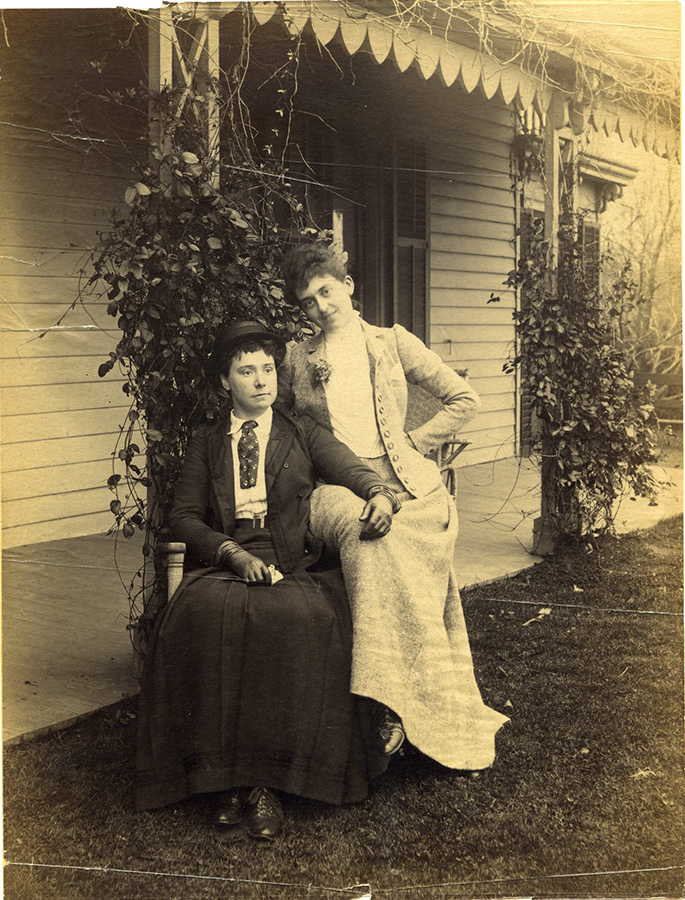
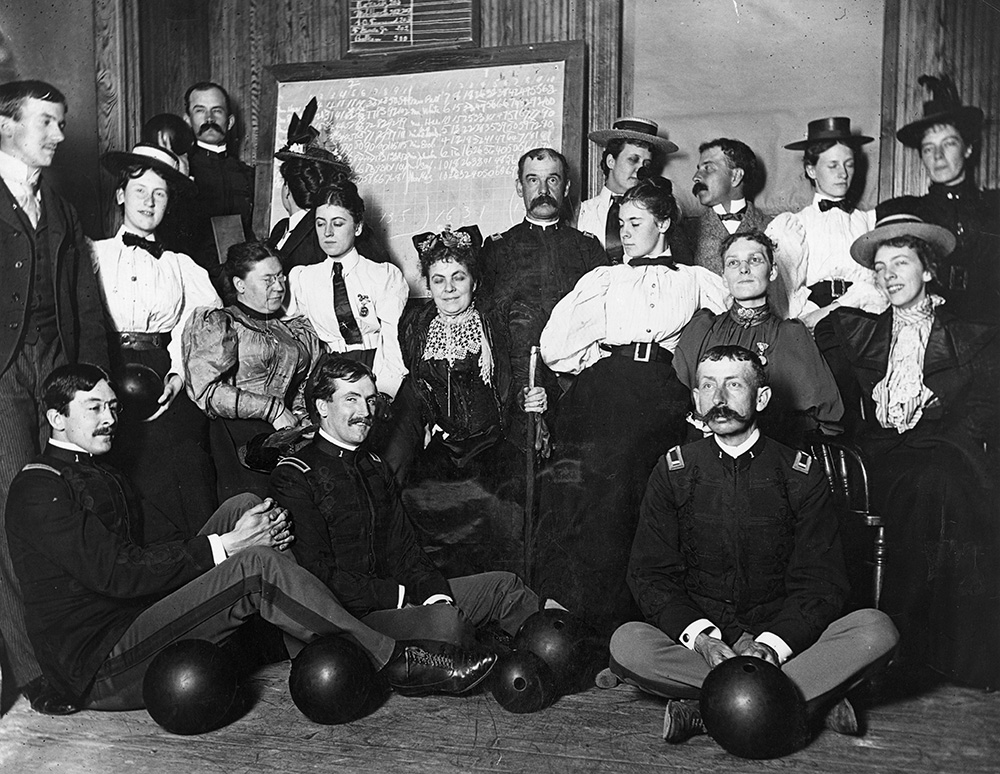
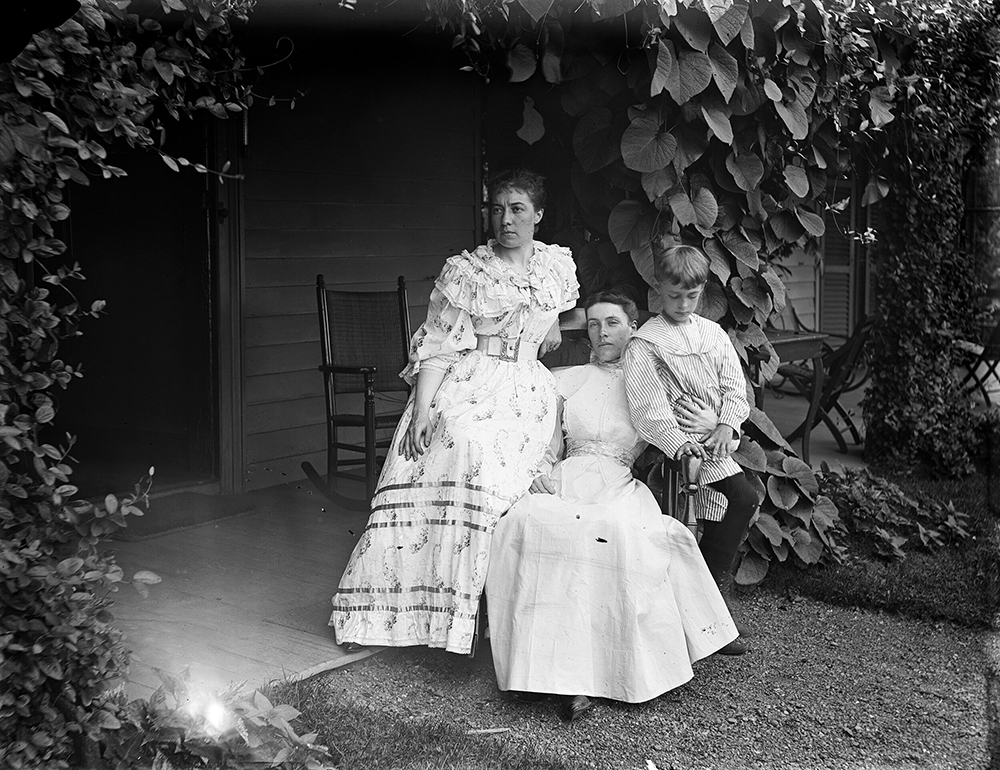
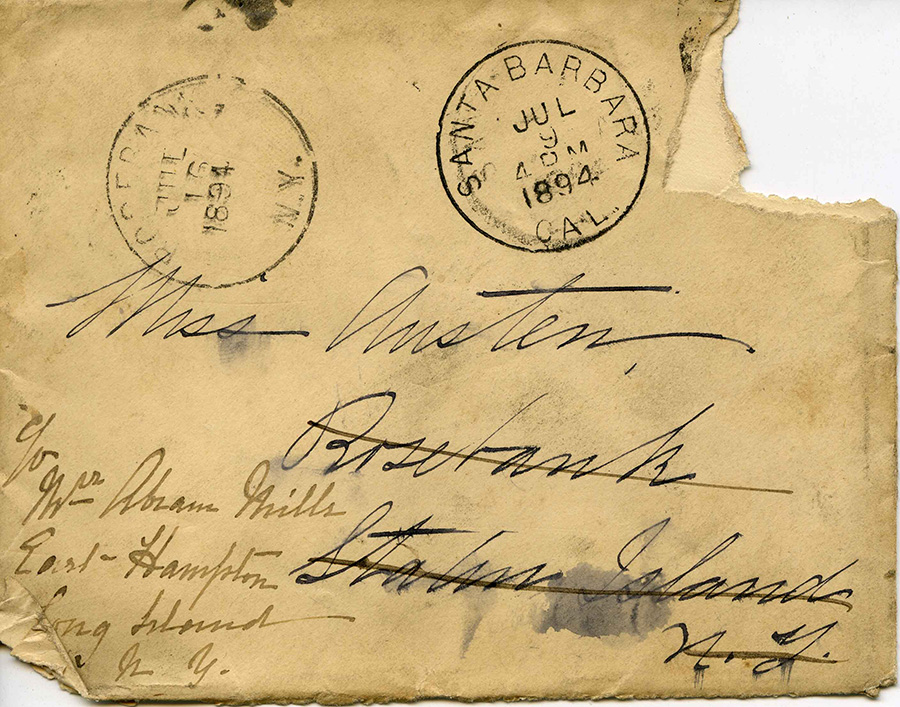
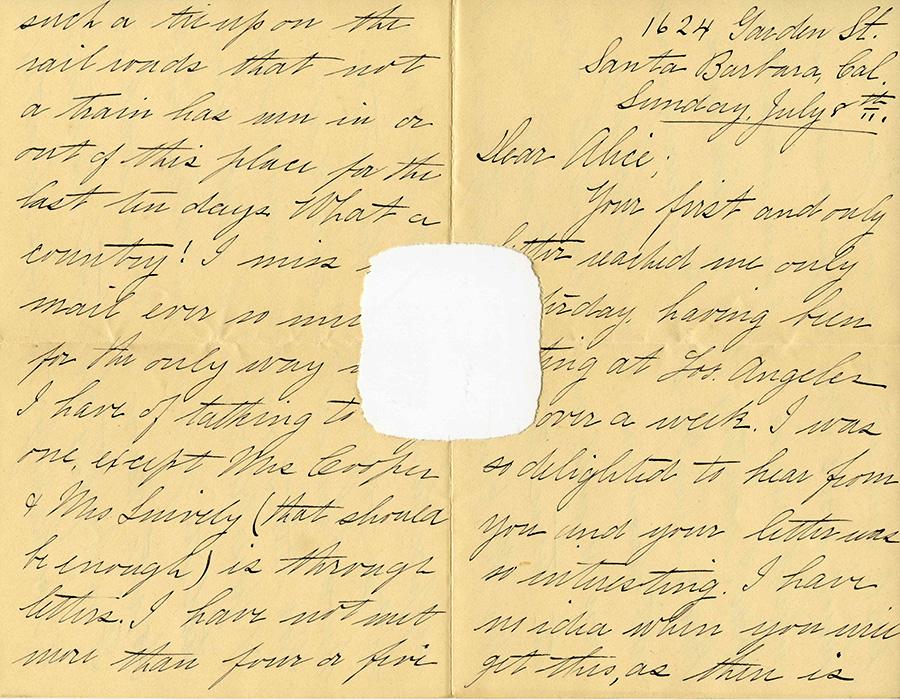
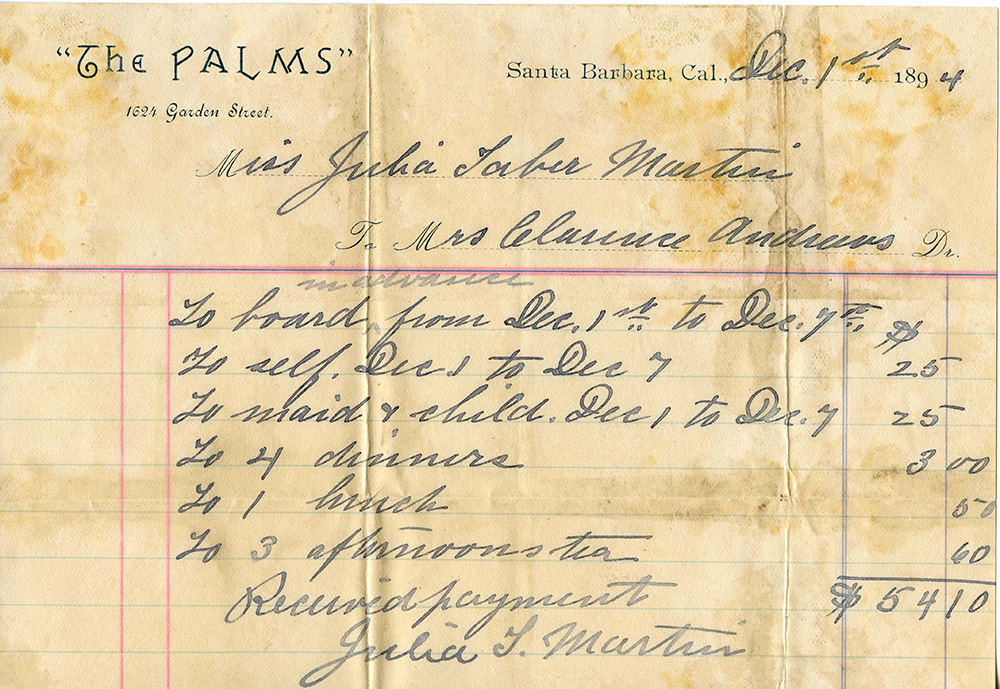
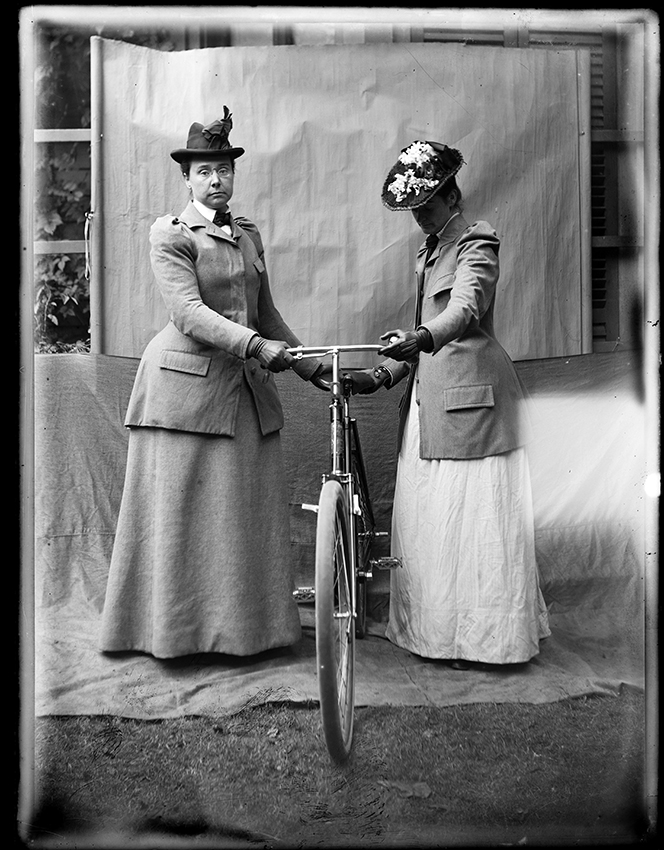
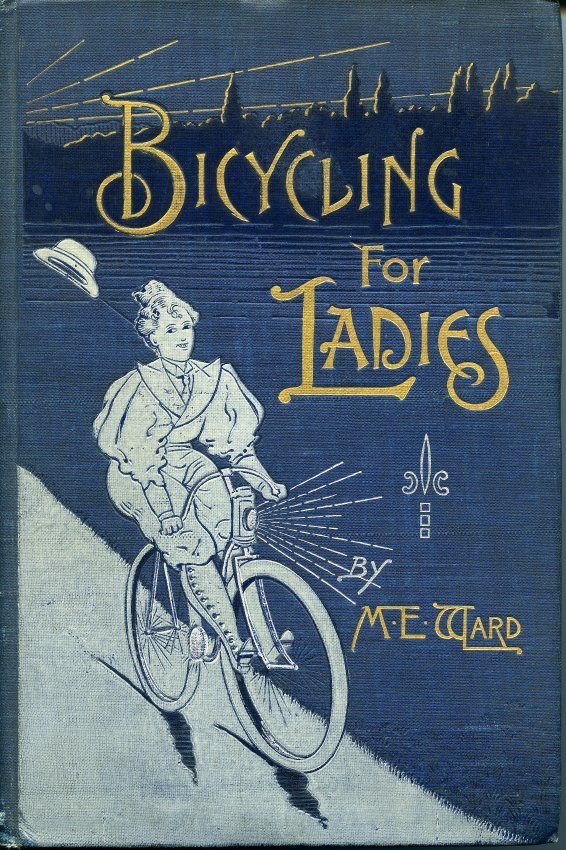
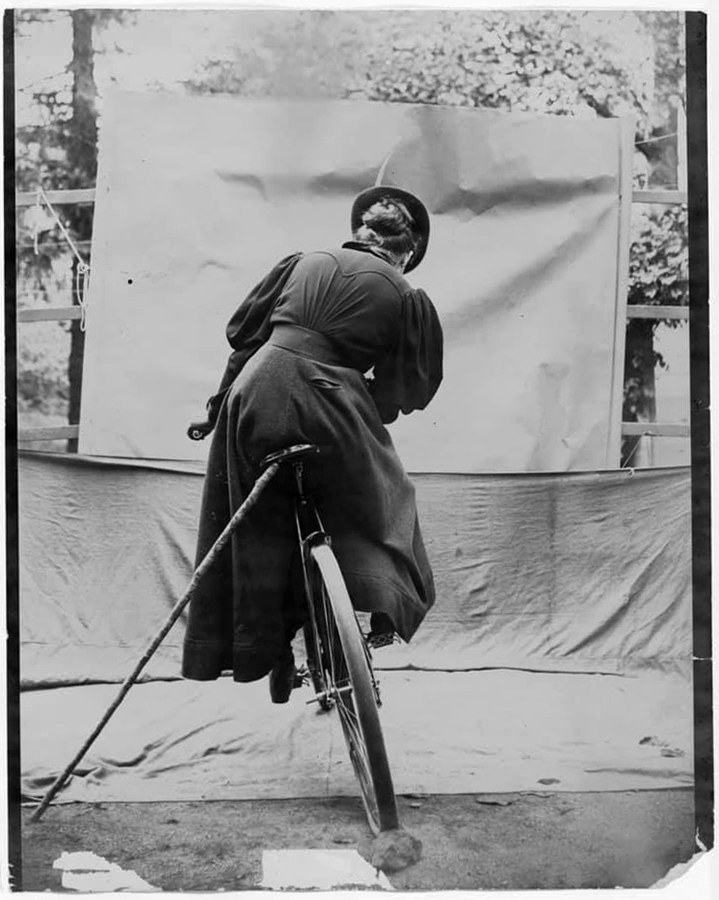
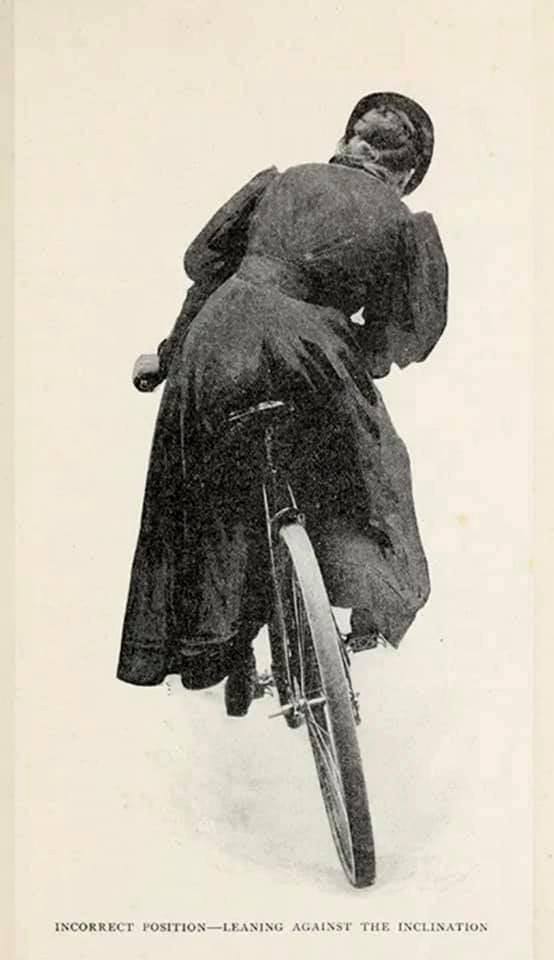
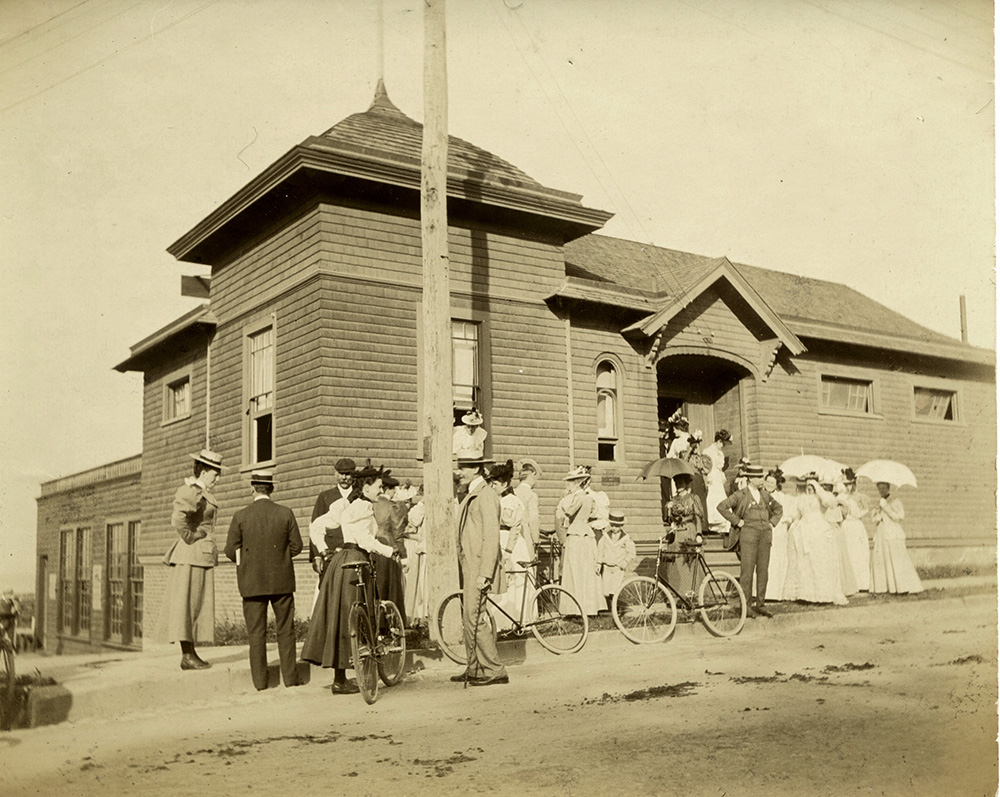
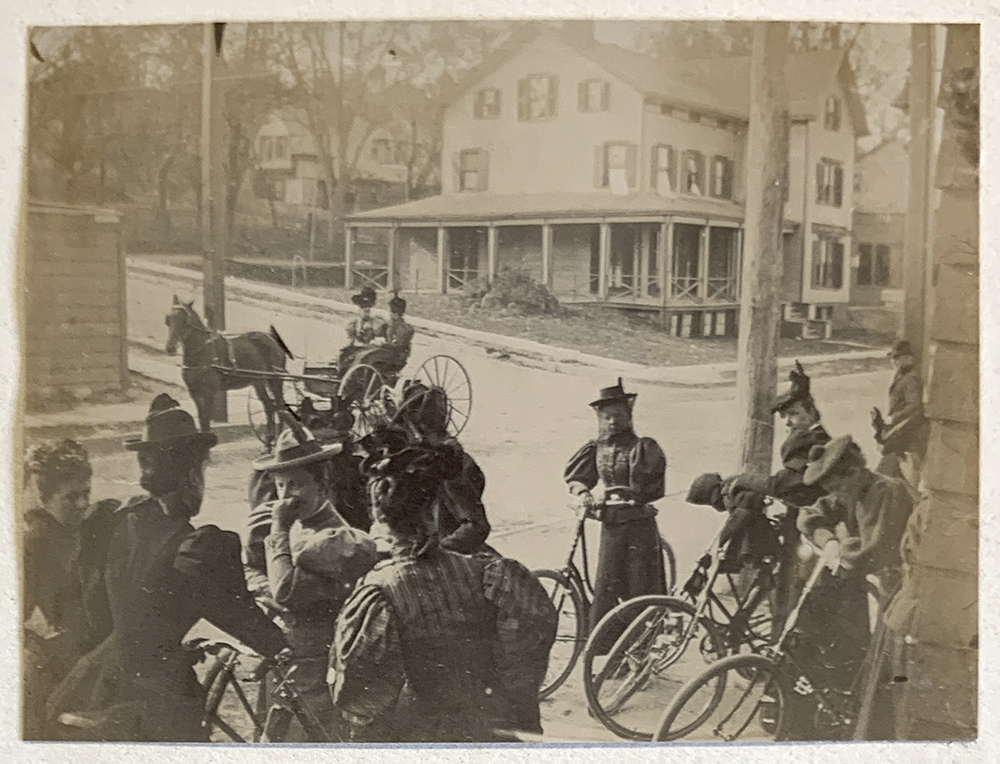
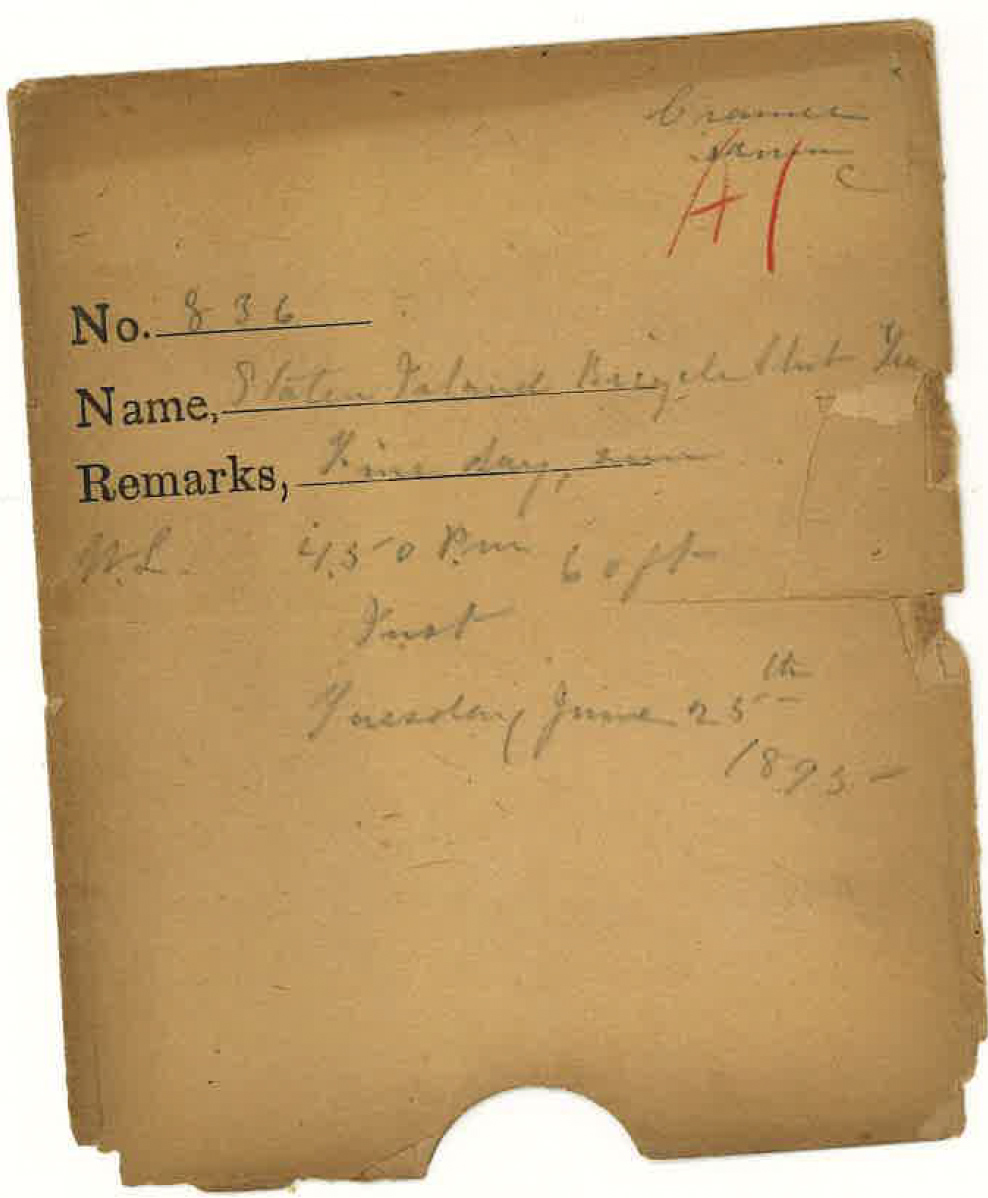
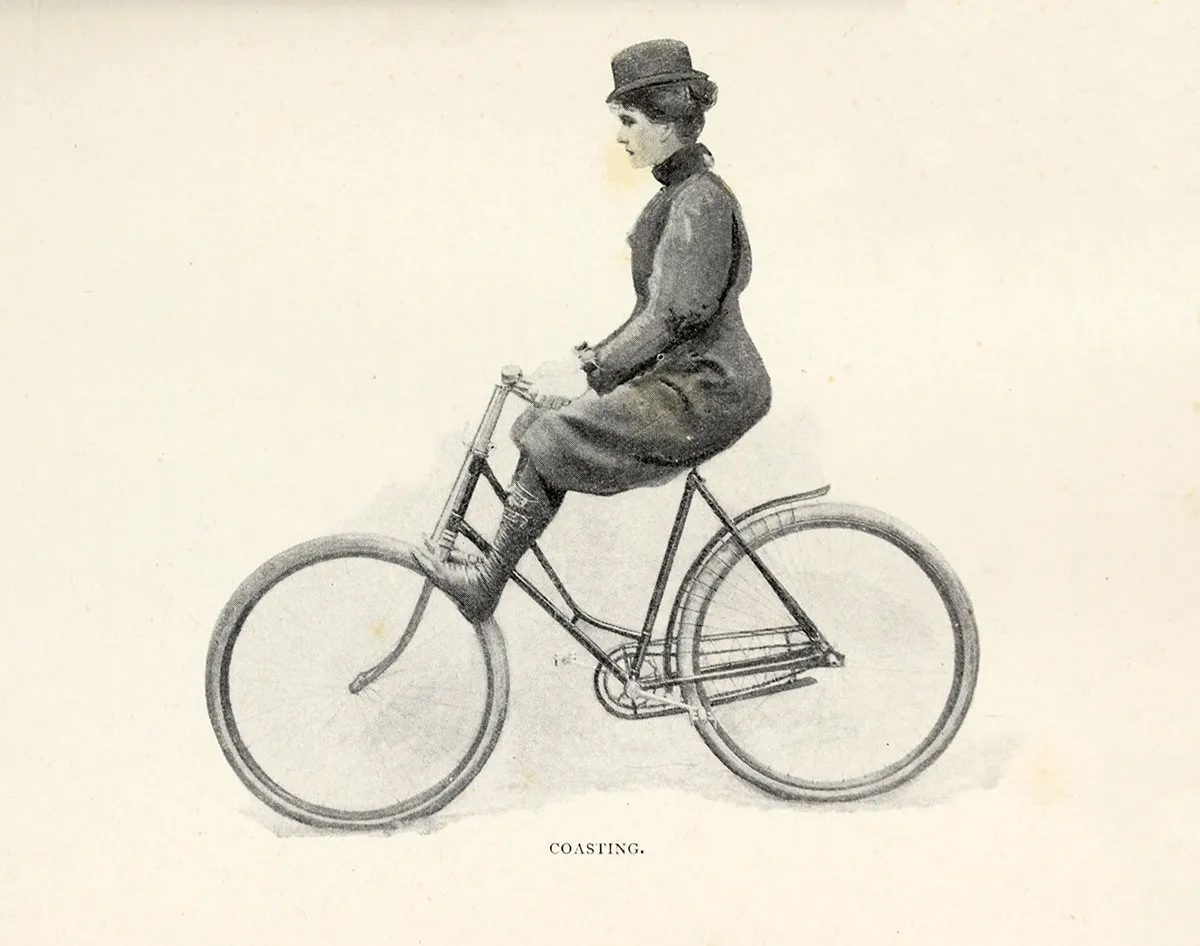
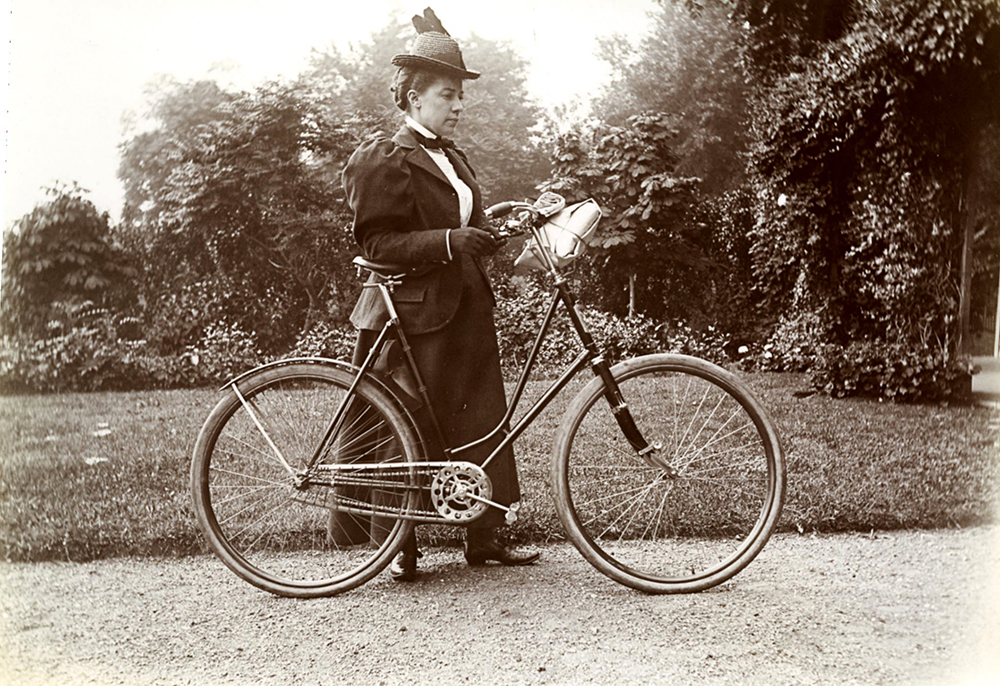
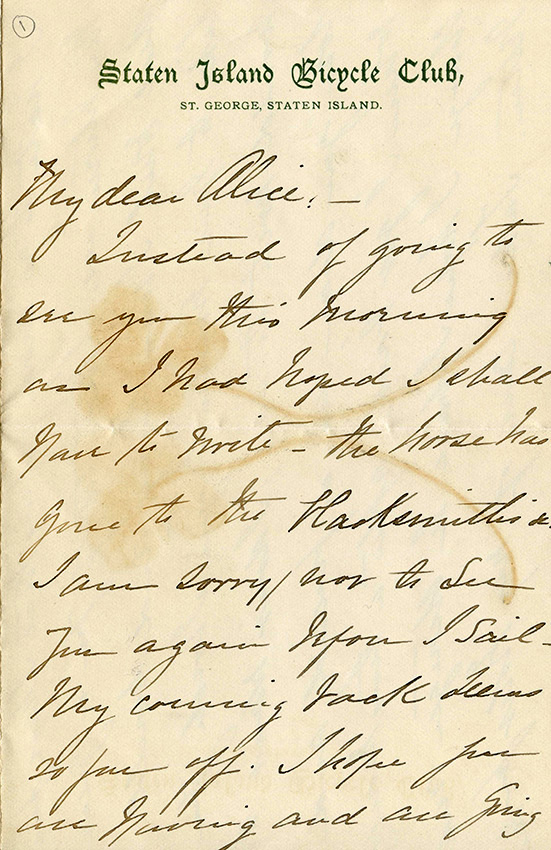
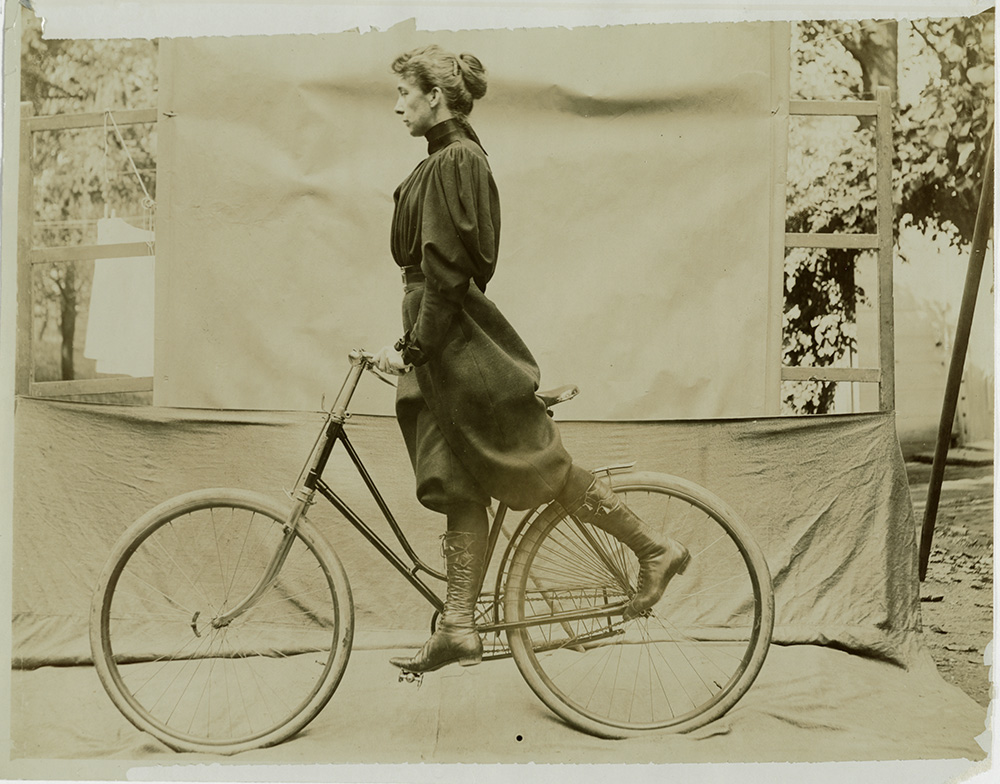
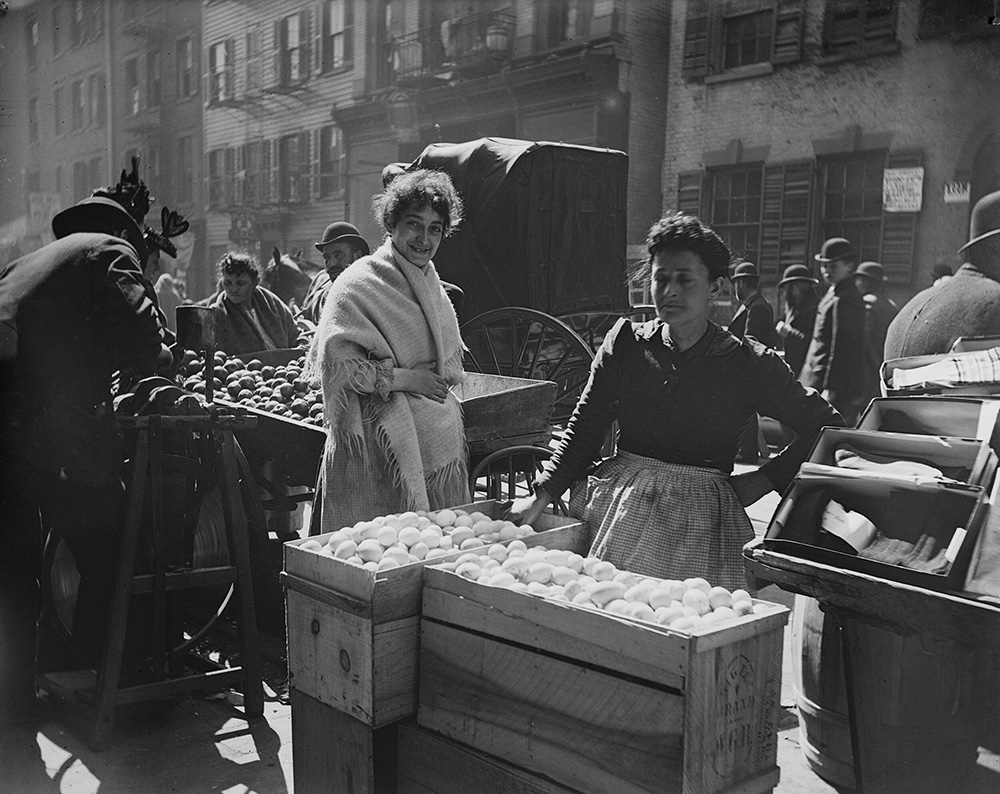
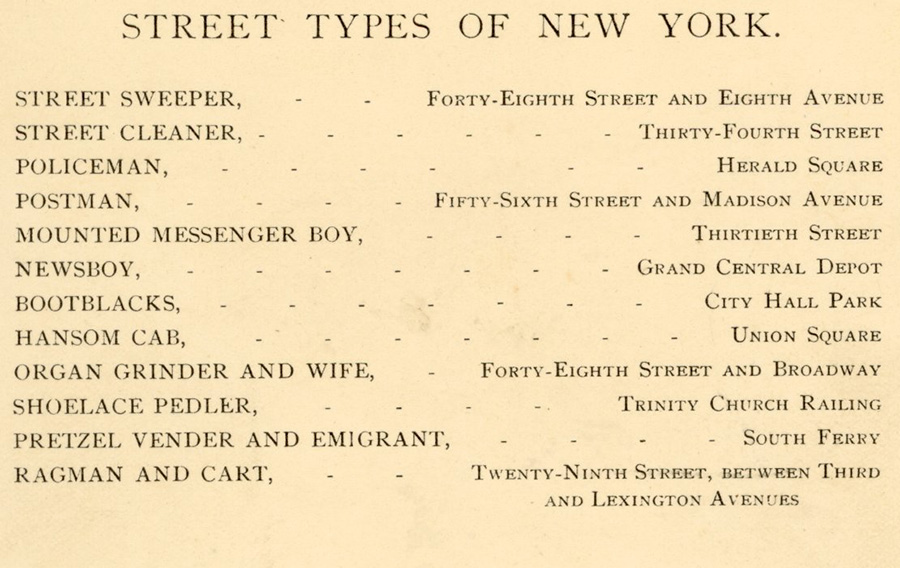
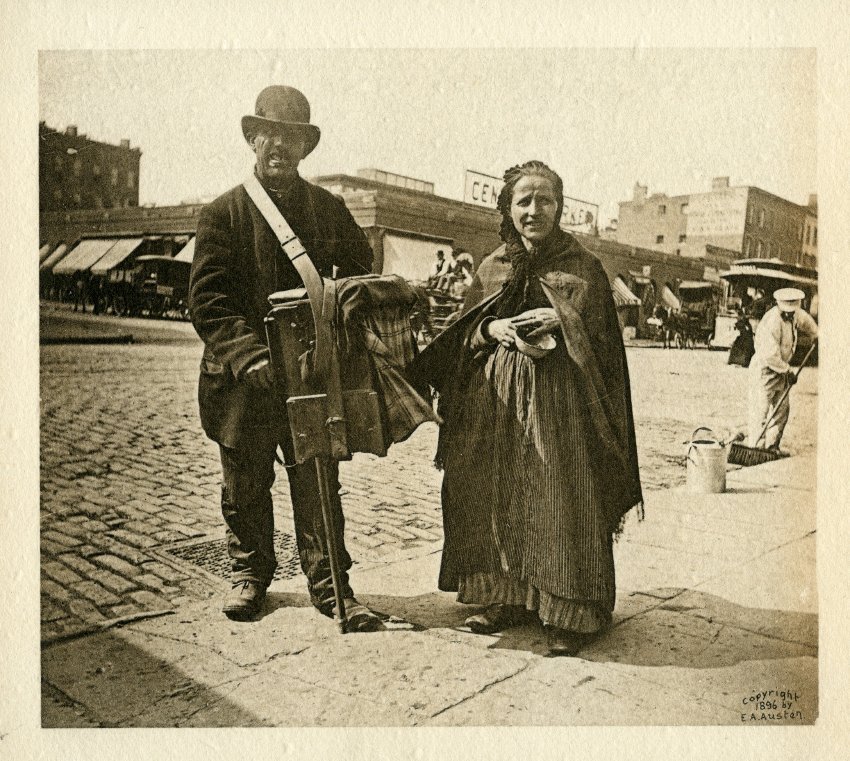
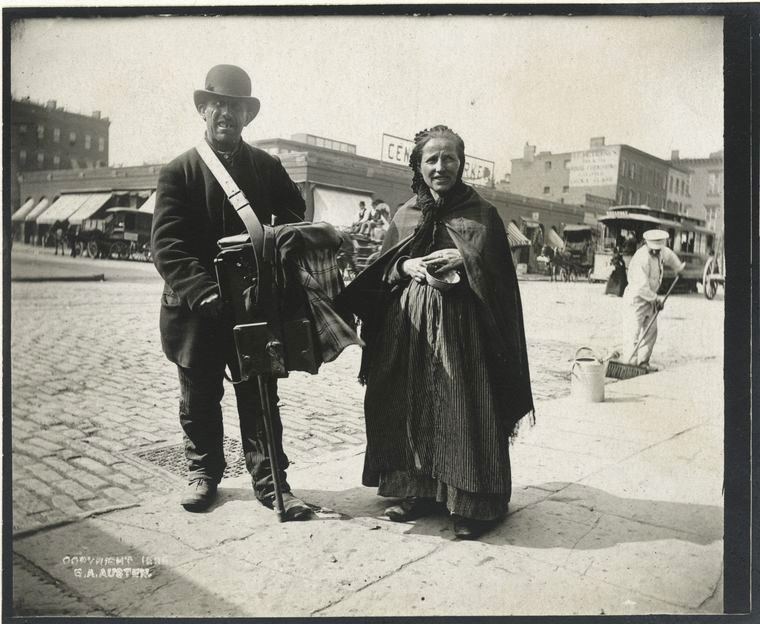
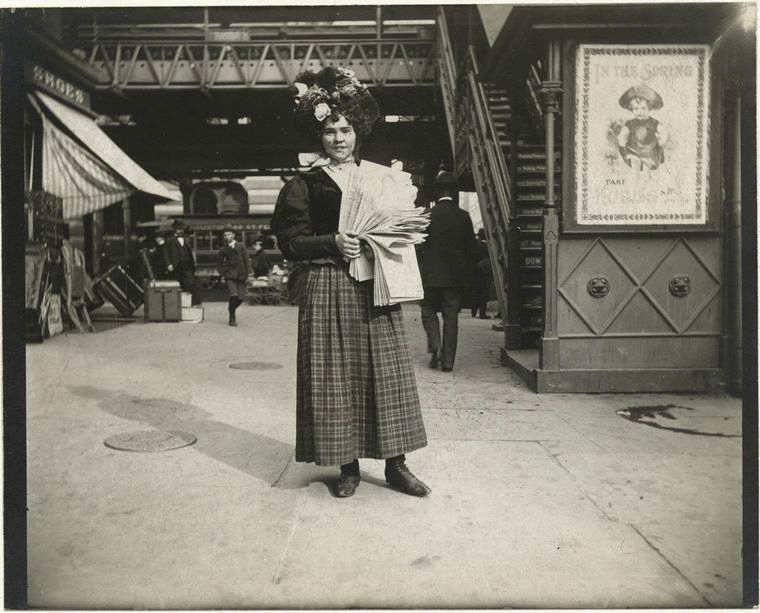
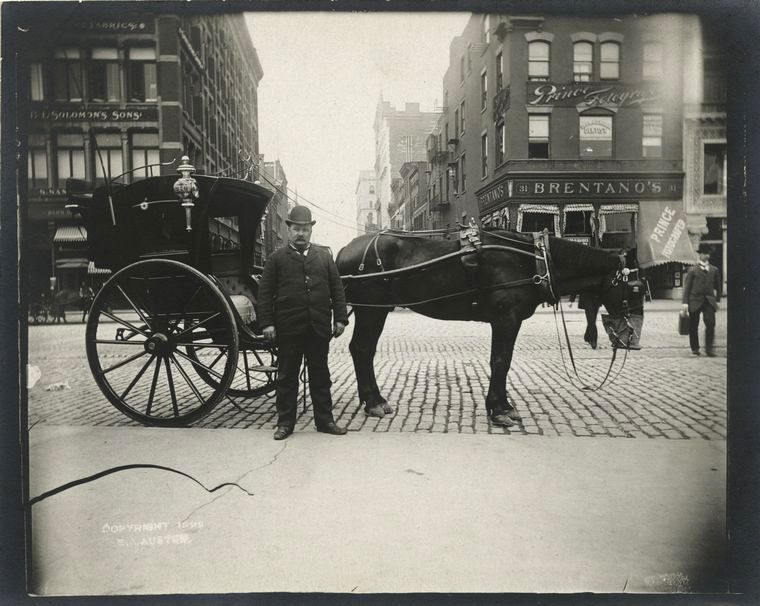
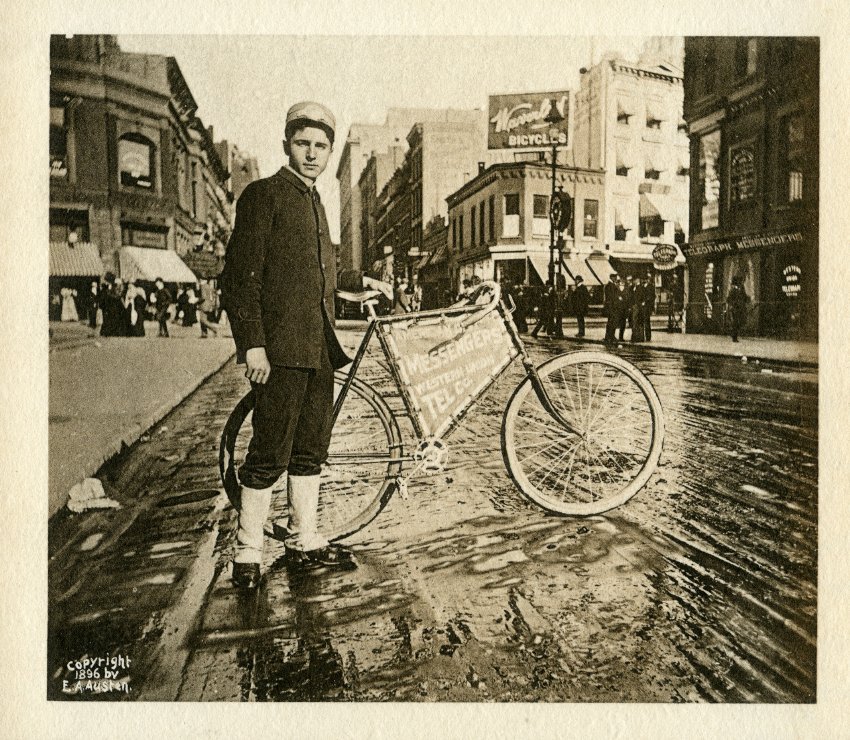


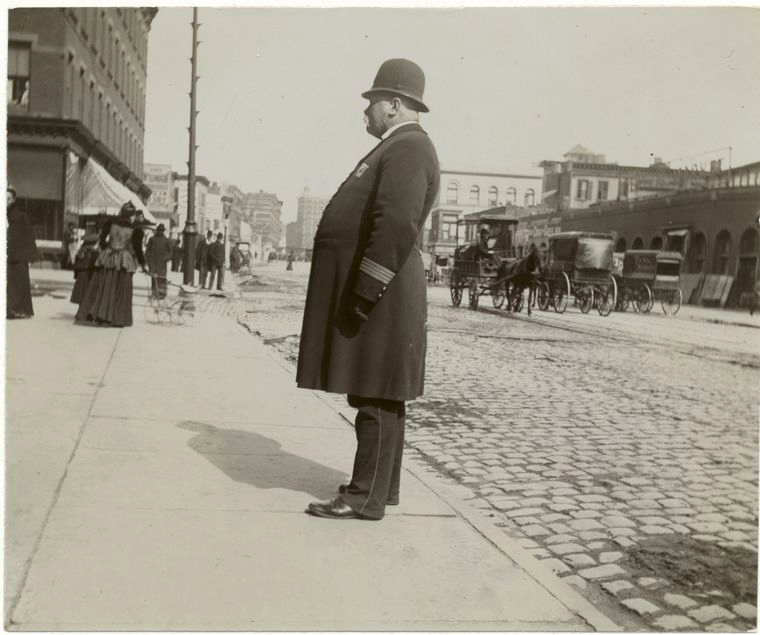
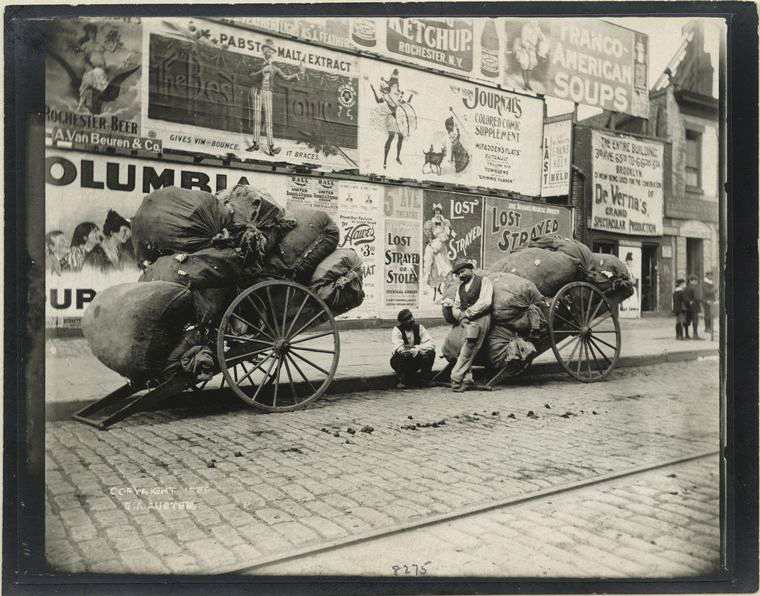
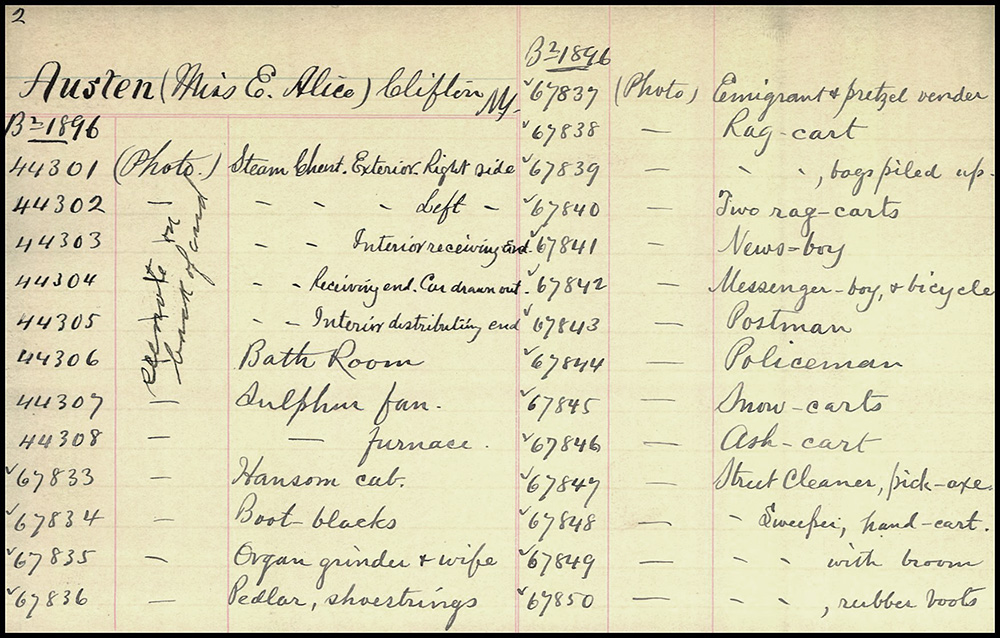
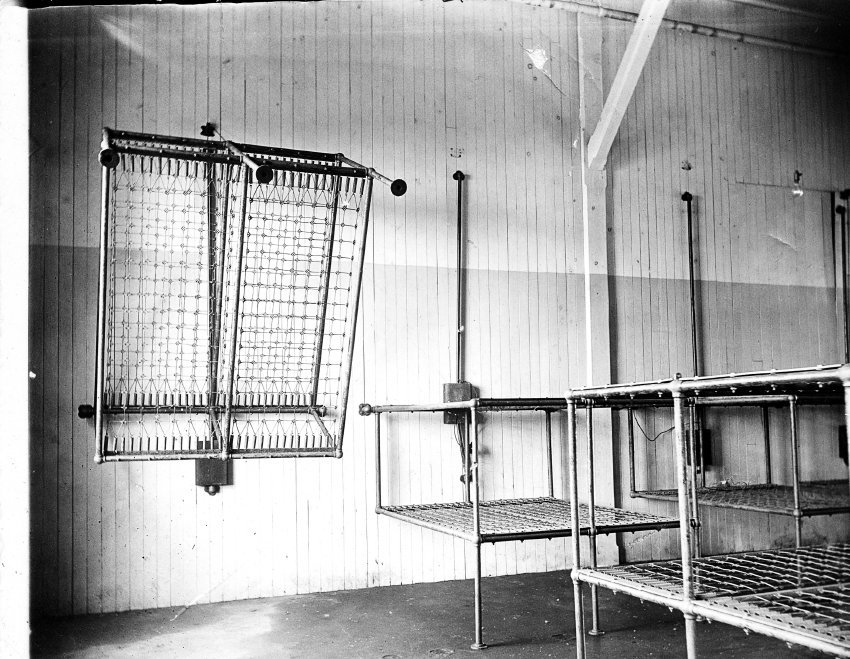
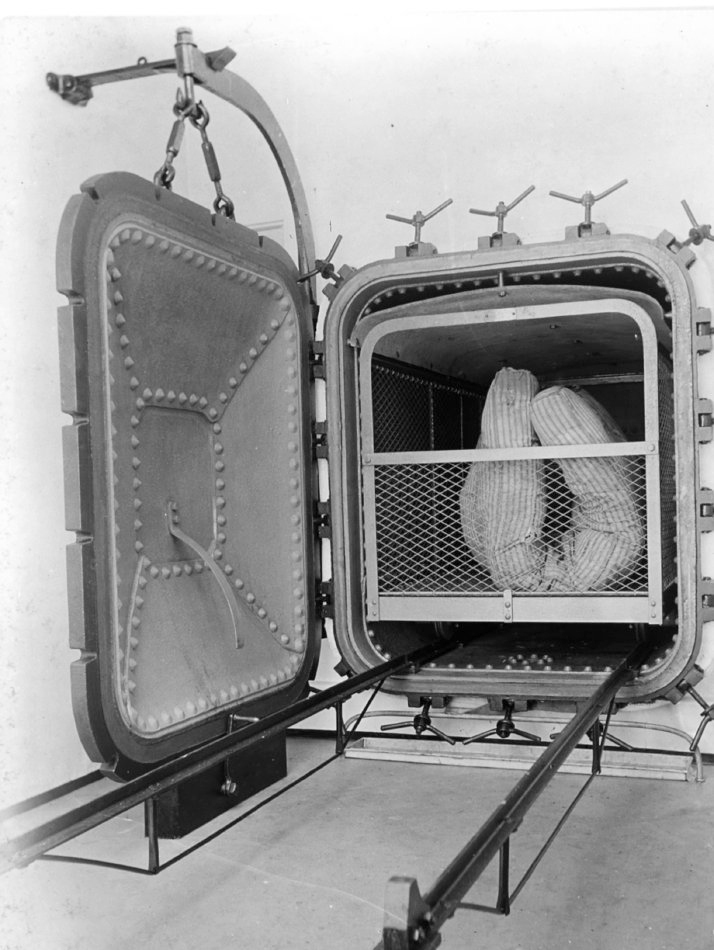

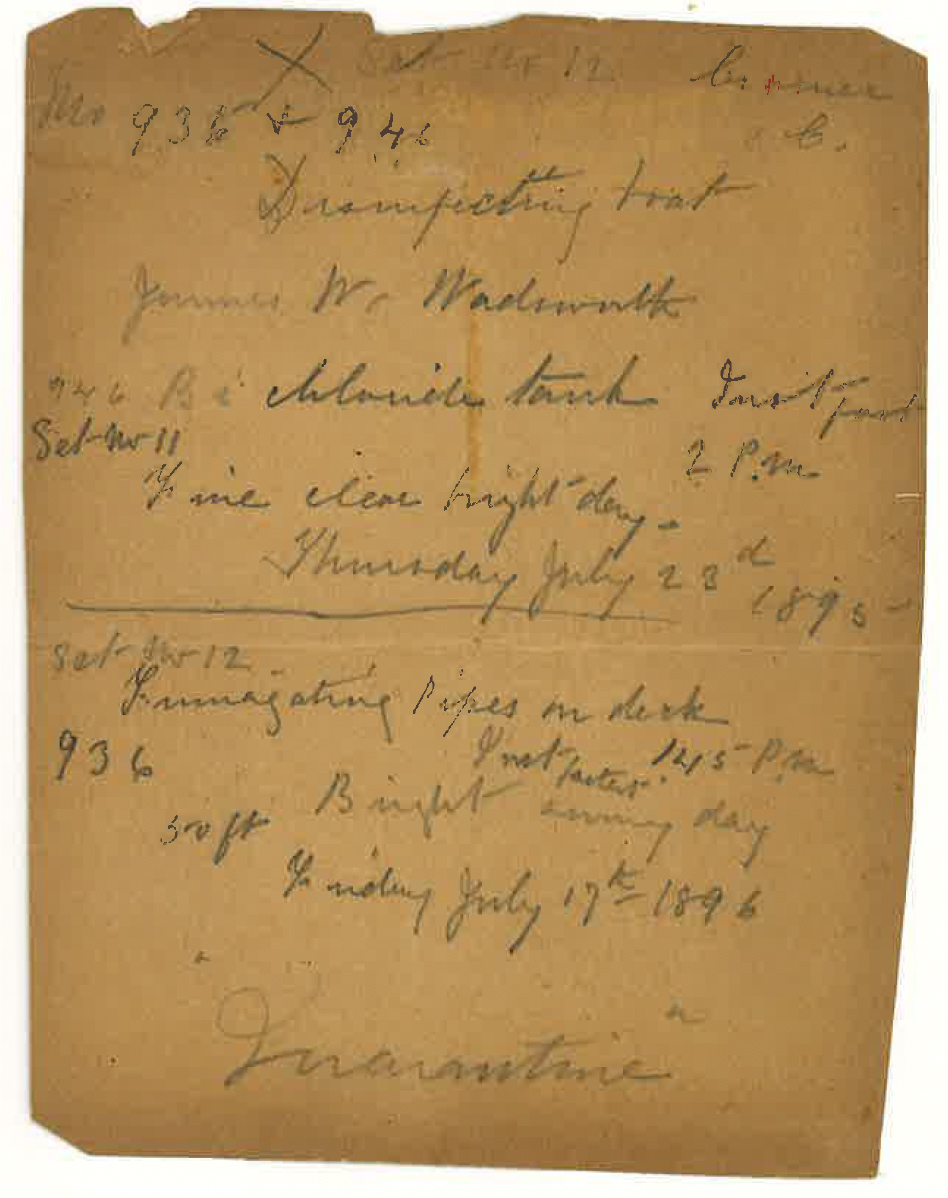


 Visit Podcast Website
Visit Podcast Website RSS Podcast Feed
RSS Podcast Feed Subscribe
Subscribe
 Add to MyCast
Add to MyCast